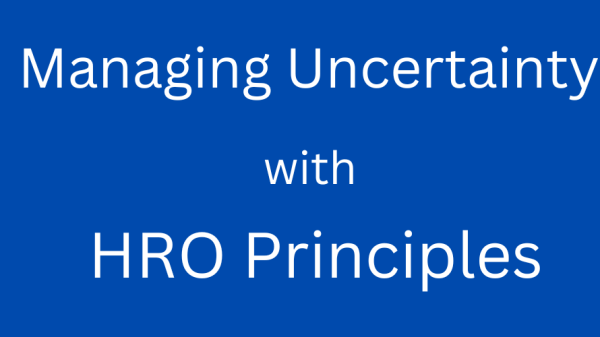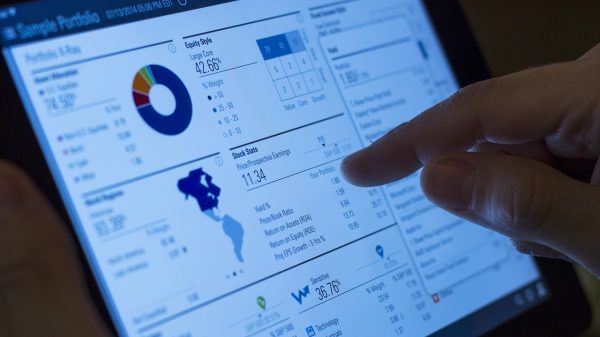Regardless of the loan, you are shopping for. You should always pay attention to all costs associated with it. Namely, you should inform yourself about the different fees and the type of interest rate charged by the lender. Understanding these costs could help you decide to take a loan that will offer the highest value at the lowest cost. Although fees should not be neglected, you should pay special attention to the interest rate you will be paying on your loan. The interest rate represents the highest cost for you when talking about loans.
Moreover, keep in mind that the longer your loan repayment period, the higher the interest cost. Before deciding on the type of loan you will take, you must understand the types of interest rates offered by the banks. This is especially true for mortgage loans that have a longer maturity period. Thus, missing the opportunity to take up a loan with a 1% lower interest rate could cost you thousands of dollars in the long run. It should be pointed out that variable interest rate is a type of interest rate offered by banks. So, the mortgage bearing a variable interest rate is known as an adjustable-rate mortgage (ARM). Understanding the adjustable-rate mortgage is crucial before applying for this type of mortgage loan. Don’t forget to check other types of mortgages available as well.
What is an adjustable-rate mortgage?
Before understanding the adjustable-rate mortgage, you should first understand the basic idea behind a fixed-rate mortgage. Namely, a fixed-rate mortgage is a mortgage where the interest rate charged by the bank (lender) remains the same during the entire loan life. Meaning that, regardless of the changes in the market (or benchmark) interest rates, the fixed-rate mortgage bears the same interest rate, and it will remain the same during the entire repayment period.
Coming to the adjustable-rate mortgage, as the name implies, the interest rate is adjustable. Stated differently, when taking out a mortgage with an adjustable interest rate, the interest rate itself is divided into two periods. The first period is when the interest is fixed, while after the expiration of this period, the interest rate is reset (adjusted) periodically. The adjustment is not made randomly. Instead, the lender adjusts using a benchmark rate. This benchmark market rate could be, for instance, LIBOR, COFI, or MTA. The interest rate adjustment could be increasing or decreasing depending on the movement in the benchmark market rate. Ins simple terms ARM is a mortgage where the interest rate could increase or decrease during the loan period.
Because the adjustable-rate mortgage is a mortgage where the interest rate is subject to change, there are a couple of things that should be understood. Namely, you should be aware of the different types of caps, and they should be defined accordingly. The different types of caps aim to outline and maintain control over the adjustments of interest rates. More precisely, these types of caps have the purpose of controlling how and by how much interest rate and/or monthly payments are adjusted.
Some of the terms that you should be acquainted with when trying to understand ARM mortgage are:
The initial rate – is the rate you will pay when you take out a mortgage. Depending on your ARM type, this rate can be fixed during a predefined period; afterward, it will be subject to adjustments.
The initial fixed-rate period is when the interest rate on your mortgage is locked (fixed). You are paying the initial rate during this period. After the initial fixed-rate period is over, you will pay different interest rates (depending on the benchmark rate).
The adjustment period – is the period after which the interest rate will be subject to changes.
Adjustment index – is used as a benchmark interest rate showing the current market conditions. Thus, the benchmark interest rate changes based on the market conditions. There are different indexes associated with the ARM. Thus it is important for you to know the index used for your ARM. The importance of the adjustment index is that changes in index amount will induce changes in the interest rate on your ARM.
Adjustment frequency – is showing the frequency at which the interest rate changes will be made. Depending on the type of ARMs, the adjustment frequency will differ.
Interest rate cap – or interest cap structure serves the purpose of protecting borrowers from excessive increases in the interest rate on their mortgage. There are a couple of common interest rate caps associated with ARM. These are Initial cap (or initial adjustment cap), subsequent adjustment cap (or periodic cap), and lifetime cap (or lifetime adjustment cap). The interest rate cap aims to limit the maximum amount that can be made with each adjustment. In addition, another aim of the caps is to limit the extent to which the interest rate can increase throughout the loan life.
- The initial cap limits how the interest rate can adjust (increase) during the first interest rate adjustment date. Stated differently, the initial cap is showing the maximum amount the interest rate can adjust when the fixed-rate period expires.
- Subsequent adjustment cap limits the maximum amount by which the interest rate can adjust from one period to another. This cap shows the maximum amount by which the interest rate can increase at each subsequent adjustment period. It should be noted that the initial cap and the periodic cap can be the same or different.
- The lifetime cap shows the maximum amount the interest rate can increase during the life of the mortgage, which means that the total adjustment over the life of the mortgage can not exceed the lifetime cap.
Payment cap – while interest rate caps limit the extent to which the interest rate can adjust, some ARMs have payment caps. This type of cap is showing the maximum amount your monthly payment can increase during each adjustment. For instance, if the payment cap on your loan is 6%, your monthly payment can not increase by more than 6% compared to your previous payment. This is even in situations when interest rates rise more. Imagine that your monthly payment for the previous period was $1,000, and the payment cap is 6%. The maximum amount your monthly payment could increase in the next period is $60, or up to $1,060. There is the negative side of ARM in case of a bigger rise in interest rate, though. Namely, the interest you will not pay because the payment cap will be added to your loan balance. This is called negative amortization.
Types of adjustable-rate mortgages
There are different adjustable-rate mortgages. They could differ from each other in terms of their repayment period, adjustment frequency, etc. Some of the available adjustable-rate mortgages are:
1 – month ARM – is an adjustable-rate mortgage, where the first adjustment is made after the expiration of the first month. The adjustments that follow are executed on a monthly basis.
6 – month ARM – a form of ARM mortgage, where the first adjustment is made after six months. The adjustments that follow are executed every six months.
3/3 and 3/1 ARM – using this type of mortgage means that the monthly payments and interest rate will not change during the first three years of the mortgage. The interest rate is adjusted every three years for the 3/3 ARM from year four and onwards. In comparison, the interest rate for 3/1 ARM is adjusted every year.
5/5 and 5/1 ARMs – are types of adjustable-rate mortgages where the monthly payments (and interest rate) remain the same for the first five years. The interest rate is adjusted every five years for the 5/5 ARM and every year for the 5/1 ARM from the beginning of year six.
10/1 ARM – represents a mortgage with a fixed interest rate for the first ten years. After the expiration of the ten-year period, the interest rates will adjust each year until the mortgage is paid off.
15/15 ARM – is an interesting type of adjustable-rate mortgage. Namely, an interest rate adjustment is made after 15 years. The interesting part is that it is the first and only adjustment made for this type of loan.
5/25 ARM – also known as “30 due in 5” mortgage is a mortgage where the monthly payment and interest rate are not subject to change in the first five years.
Balloon mortgages – have shorter repayment life, and in general, work similarly to a fixed-rate mortgage. As the name suggests, there is a balloon payment on this type of mortgage. This balloon payment is paid at the end of the repayment period. Consequently, the monthly payments are much lower and consist mostly of interest charges. The major aspect that should be considered before applying for a balloon mortgage is to have enough funds to pay balloon payments at the end of the loan life.
2- Step mortgage – is a form of adjustable-rate mortgage consisted of two parts (steps). This mortgage has the same interest rate for a portion of the mortgage, while it has a different interest rate for the remaining portion of the mortgage loan – the variable interest rates changes in accordance with the market rates.
Going through the types of adjustable-rate mortgages, it is obvious that the adjustment period can be as short as one month or as long as a couple of years. This means that you can choose the adjustment period based on your needs. However, keep in mind that a one-year adjustable-rate mortgage is a much riskier option than a five-year adjustable-rate mortgage. The riskiness is higher with the one-year ARM because your monthly payment could change significantly from year to year during the mortgage life.
Benefits of Adjustable-rate mortgage
- The decrease in interest rates – one benefit could be the decrease in the market interest rate. Meaning that you could enjoy the benefit of lower monthly payments if the interest rate is decreasing during the adjustment period, unlike the fixed-rate mortgage, where you will pay the same monthly payment.
- Starting interest rate – an adjustable-rate mortgage charged at the beginning is generally lower than the interest rate charged on the fixed interest rate mortgage.
- Lower initial monthly payments – because this type of mortgage has a lower interest rate, it also has lower monthly payments (until the adjustment is made, afterword depends on the market rate) compared to the fixed-rate mortgage.
Risks associated with ARM
- Risk of increase in market interest rate – will result in an increase in your monthly payment as well as an increase in the overall cost of your loan.
- Monthly payments – can be stable and lower during the period of fixed interest rate. Afterward, it can constantly change depending on the direction of adjustments made to the interest rates.
- Negative amortization – is one of the major drawbacks of ARM’s. Meaning that, although the payment cap protects you, any remaining interest not included in the monthly payment will be added to your outstanding balance.
There are many things that should be considered before applying for an adjustable-rate mortgage. First and foremost, make sure that you understand how ARM’s work and get familiar with the basic terminology. More important, try to understand the characteristics. An adjustable-rate mortgage can be beneficial, but it could also pose a risk for your financial health. This is primarily because of the possibility of negative amortization. Before deciding on taking out an ARM, get acquainted with the expectations related to the interest rate movement in the future. Always make an informed decision. If you do not understand financial products, maybe it would be wiser to talk with a professional.





